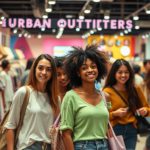
The world of fashion is vast and varied, but few elements capture the essence of creativity and craftsmanship quite like haute couture. Originating in Paris in the mid-19th century, haute couture represents the pinnacle of custom-fitted clothing, characterized by intricate design, high-quality materials, and exceptional sewing techniques. This article delves into the fascinating history of haute couture, exploring how it evolved and persisted as a symbol of luxury and exclusivity.
The Origins of Haute Couture

Haute couture, a French term meaning “”high sewing”” or “”high dressmaking,”” began to take form in Paris during the 1850s. The father of haute couture, Charles Frederick Worth, was an Englishman who moved to Paris and founded Worth & Bobergh in 1858. Worth’s innovative approach to fashion included creating unique, bespoke garments for his elite clientele, effectively establishing the standard for what couture would become. He went so far as to present collections each season, a practice that continues in modern fashion houses.
The Golden Age of Haute Couture
The years between the late 19th century and the early 20th century are often referred to as the golden age of haute couture. During this period, designers such as Paul Poiret, Coco Chanel, and Madeleine Vionnet revolutionized the industry with their avant-garde creations. They pushed the boundaries of fashion, introducing new silhouettes and techniques that captivated the wealthy and famous. This era also saw the rise of haute couture maisons, or fashion houses, which became synonymous with prestige and luxury.
The Role of World Wars in Shaping Couture
World War I and World War II had significant impacts on haute couture. During World War I, many fashion houses closed their doors, and the industry suffered. However, the interwar period saw a resurgence, led by visionaries like Coco Chanel and Elsa Schiaparelli. World War II posed even greater challenges, with cloth rationing and disruptions. Yet, post-war, Paris once again emerged as the fashion capital, thanks largely to Christian Dior’s “”New Look”” in 1947, which reinstated opulence in women’s fashion.
The Modern Evolution of Haute Couture
As the 20th century progressed, haute couture continued to evolve. Designers such as Yves Saint Laurent, Pierre Cardin, and Jean-Paul Gaultier emerged, each bringing their unique vision to the tradition of haute couture. The rise of ready-to-wear fashion, however, posed a challenge to haute couture. To remain relevant, many fashion houses began offering prêt-à-porter lines alongside their couture collections. This strategic move allowed them to reach a wider audience while maintaining their couture heritage.
The Elements That Define Haute Couture
Haute couture is distinct not merely for its luxurious designs but also for the craftsmanship involved. Key elements of haute couture include:
- Bespoke fitting
- Highest quality fabrics
- Hand-sewn techniques
- Exclusivity and limited production
- Innovative and artistic design
These elements ensure that every haute couture piece is a work of art, reflecting the meticulous effort and creativity of the designers and artisans involved.
Conclusion
Though it has faced numerous challenges over the years, haute couture remains an essential facet of the fashion world. It continues to serve as an inspiration for designers and a dream for many fashion enthusiasts. Haute couture’s commitment to craftsmanship and exclusivity ensures that it will always be celebrated, retaining its place as the zenith of luxury fashion. As long as there are those who appreciate the art of dressmaking, haute couture will continue to thrive and evolve.
FAQs
What does “”haute couture”” mean?
Haute couture is a French term that translates to “”high sewing”” or “”high dressmaking,”” signifying exclusive, custom-fitted clothing of the highest quality and craftsmanship.
Who is considered the father of haute couture?
Charles Frederick Worth, an English designer who moved to Paris, is often credited as the father of haute couture. He established the first haute couture house in 1858 and set many of the standards still followed today.
How did World War II affect haute couture?
World War II posed significant challenges to haute couture, including cloth rationing and industry disruptions. However, designers like Christian Dior revitalized the industry post-war with innovative designs such as the “”New Look.””
What distinguishes haute couture from ready-to-wear fashion?
Haute couture is characterized by bespoke fitting, high-quality materials, and hand-sewn techniques, offering exclusivity and artistic design. In contrast, ready-to-wear fashion offers mass-produced, off-the-rack clothing that is more accessible to the general public.
Is haute couture still relevant today?
Yes, haute couture remains relevant as a symbol of luxury and high fashion. While the advent of ready-to-wear posed challenges, haute couture continues to inspire designers and captivate fashion enthusiasts, ensuring its ongoing legacy.




